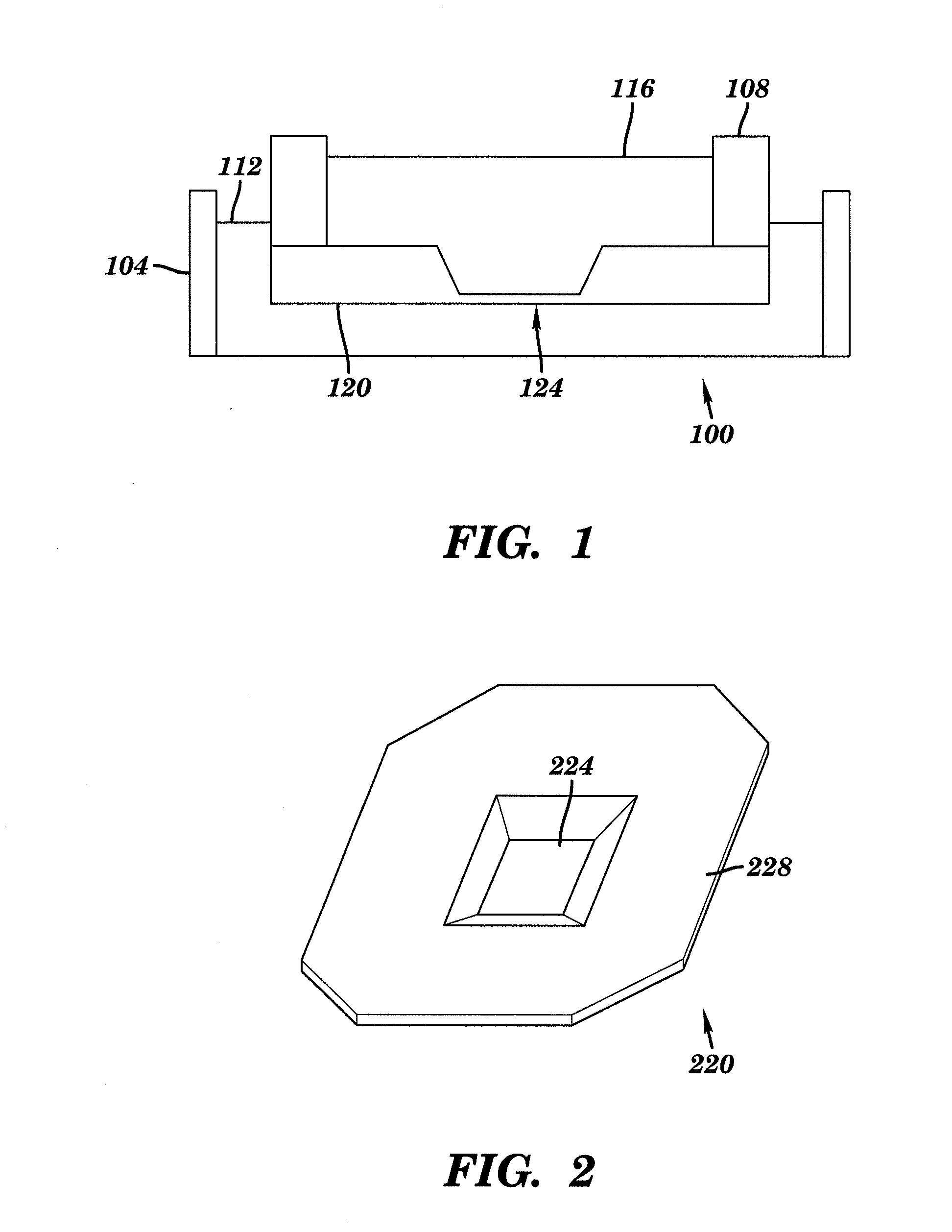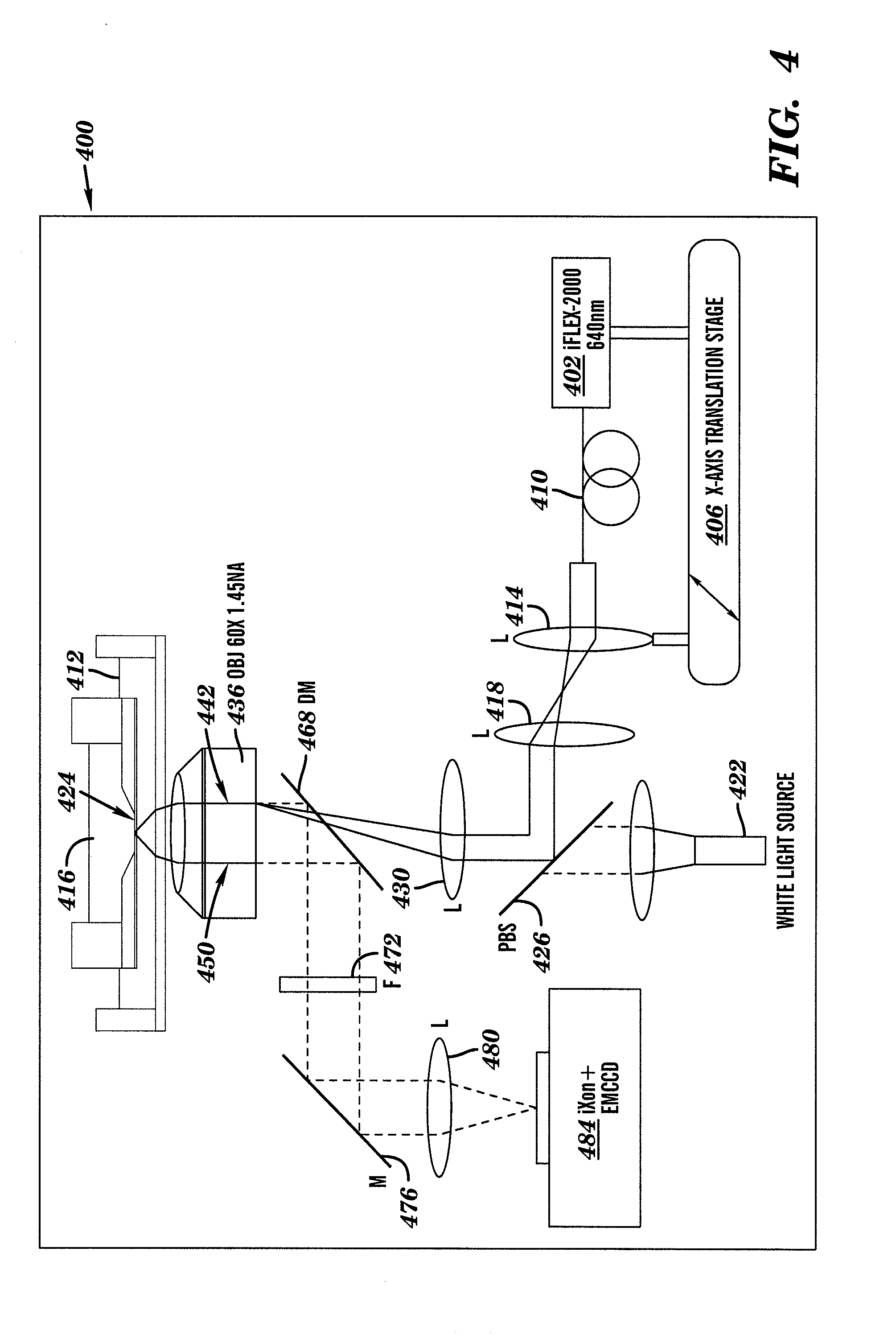Method for imaging on thin solid-state interface between two fluids
a solid-state interface and fluid technology, applied in the field of optical microscopy, can solve the problems of incompatible solid-state materials used in those contexts, difficult to bring these solid-state material surfaces, and extremely tedious to construct nano-fluidic channels, etc., to achieve high sensitivity, high contrast, and high resolution
- Summary
- Abstract
- Description
- Claims
- Application Information
AI Technical Summary
Benefits of technology
Problems solved by technology
Method used
Image
Examples
example 1
Sample Geometry
[0089]Silicon chips [5 mm×5 mm×300 μm] with a free standing 20-50 nm thick silicon nitride window [50 μm×50 μm] in the centre were made by standard photolithographic methods on LPCVD coated SiN layers on silicon wafers. A two-part PTFE / CTFE fluid cell was designed to mount these chips over a glass coverslip forming a 2-10 μm thick microchannel between the chip and glass coverslip, as shown in FIG. 3. The microchannel, trans chamber 204, was filled with fluid of a higher refractive index (70% glycerol [n=1.42]) and the cis chamber 208 was filled with a sample solution buffer in water [n=1.33].
TIRF Setup and Ray Diagram
[0090]Total internal reflection [TIR] microscopy was setup as shown in FIG. 4. The laser beam size was reduced to 0.7 mm, launched into the custom designed back port of a commercially available inverted microscope (Olympus IX-71) and focused at the back focal plane of a 60× 1.45 NA oil-immersion TIRF objective via an externally mounted 200 mm focal length...
example 2
TIRF Setup
[0097]In the experiment, a silicon chip 1128 containing a free-standing SiN membrane (20×20 μm2) 1124 having a nanopore 600 was used as the interface. The silicon chip 1128 was mounted on a glass coverslip 1140, which was mounted on a custom made chlorotrifluoroethylene (CTFE polymer) fluid cell 1138 to create a micro fluidic trans chamber 1100 as shown in FIG. 11. The fluid cell 1138 included an insert 1138a holding the silicon chip 1128 and an outer cell 1138b to form the fluidic chambers. Thin layers of fast curing polydimethlysiloxane (PDMS) were used to bond the silicon chip 1128 to the CTFE insert 1138a and bond the glass coverslip 1140 to the outer cell 1138b. The fluid chamber having the insert 1138a is the cis chamber, and the space between the silicon chip 1128 and the glass coverslip 1140 is the trans chamber. The trans chamber was filled with a refractive index buffer 1112 using the inlet-outlet flow channels. For electrical measurements, a trans electrode 1140...
example 3
[0105]Simultaneous optical and electrical measurements were performed to detect the fluorophore-labeled dsDNA translocating through a 4 nm pore. Sample concentrations in this experiments was 0.1 nM-0.2 nM. FIGS. 15A-15B schematically illustrate the pore geometry, and a TEM image of an exemplary approximately 4 nm pore. A 421 bp fragment (DNA-A1647), labeled with Alexa647 fluorophores, was used by incorporation of low concentrations of amine-modified thymine bases during polymerase chain reaction (PCR) reaction followed by conjugation with the amine-reactive dye.
[0106]As shown in FIGS. 16A-16B, nine representative ion currents and their corresponding fluorescence intensity events are shown after the DNA-A1647 molecules were added to cis side of the pore (200 mV bias generating an open pore current of 4 nA; images were acquired at 1 ms integration with maximum EM gain). The nanopore location was determined as described above. The fluorescence intensity shown was extracted from a 3×3 p...
PUM
| Property | Measurement | Unit |
|---|---|---|
| thick | aaaaa | aaaaa |
| thick | aaaaa | aaaaa |
| thickness | aaaaa | aaaaa |
Abstract
Description
Claims
Application Information
 Login to View More
Login to View More - R&D
- Intellectual Property
- Life Sciences
- Materials
- Tech Scout
- Unparalleled Data Quality
- Higher Quality Content
- 60% Fewer Hallucinations
Browse by: Latest US Patents, China's latest patents, Technical Efficacy Thesaurus, Application Domain, Technology Topic, Popular Technical Reports.
© 2025 PatSnap. All rights reserved.Legal|Privacy policy|Modern Slavery Act Transparency Statement|Sitemap|About US| Contact US: help@patsnap.com



